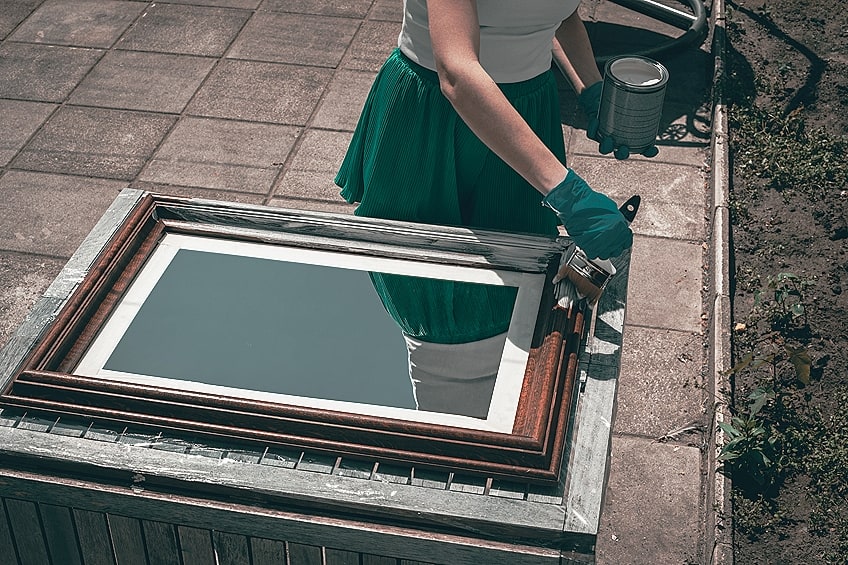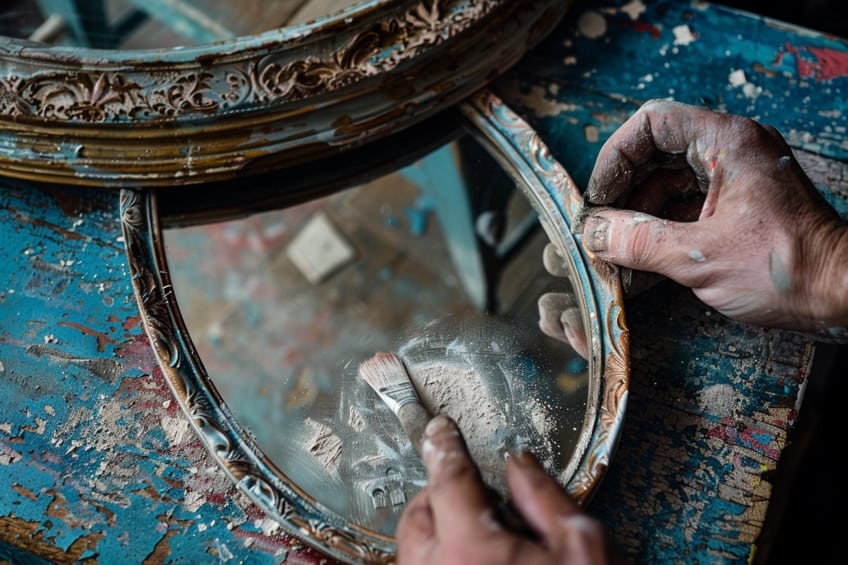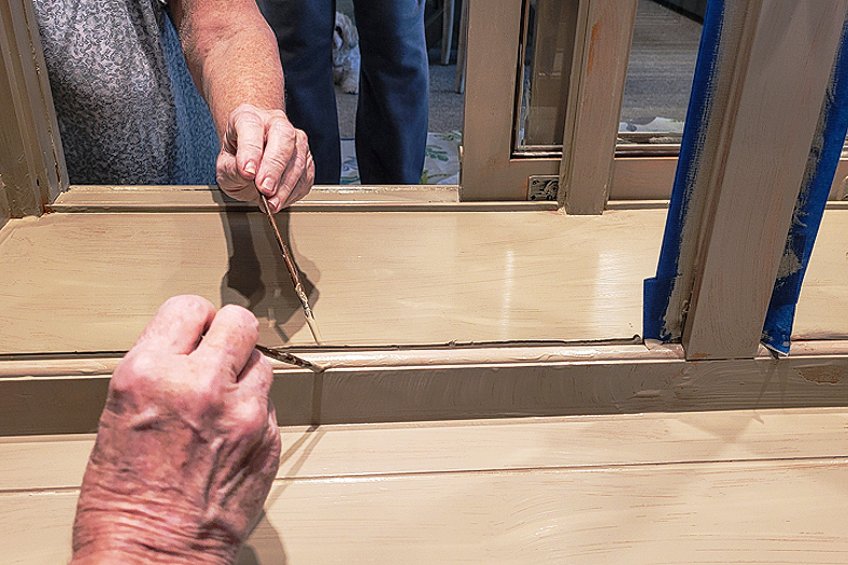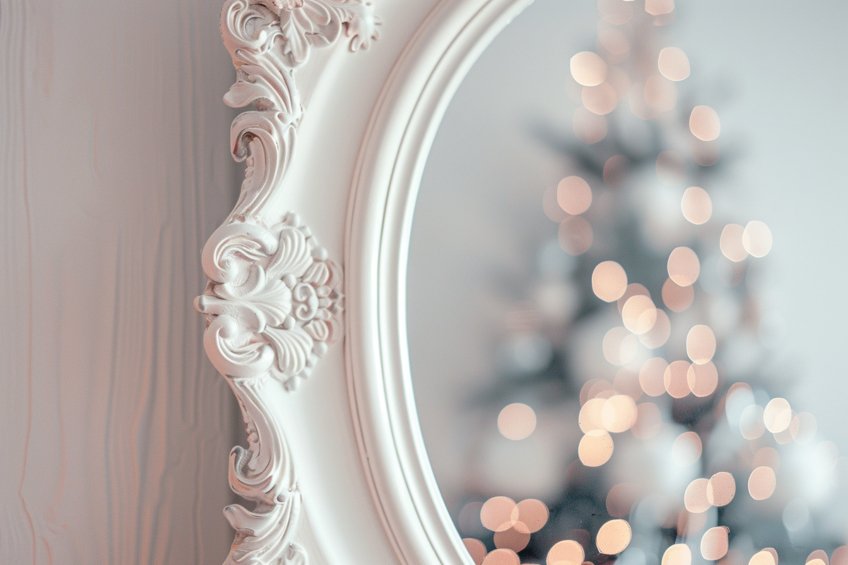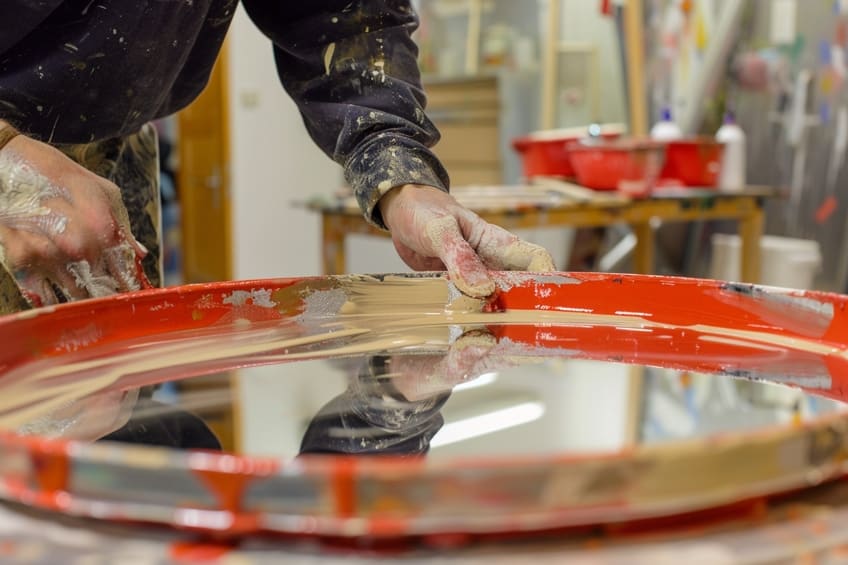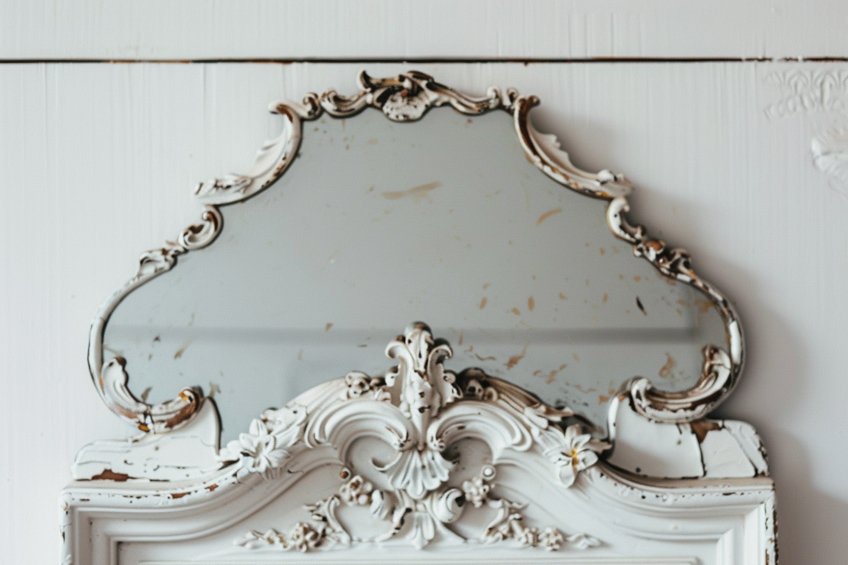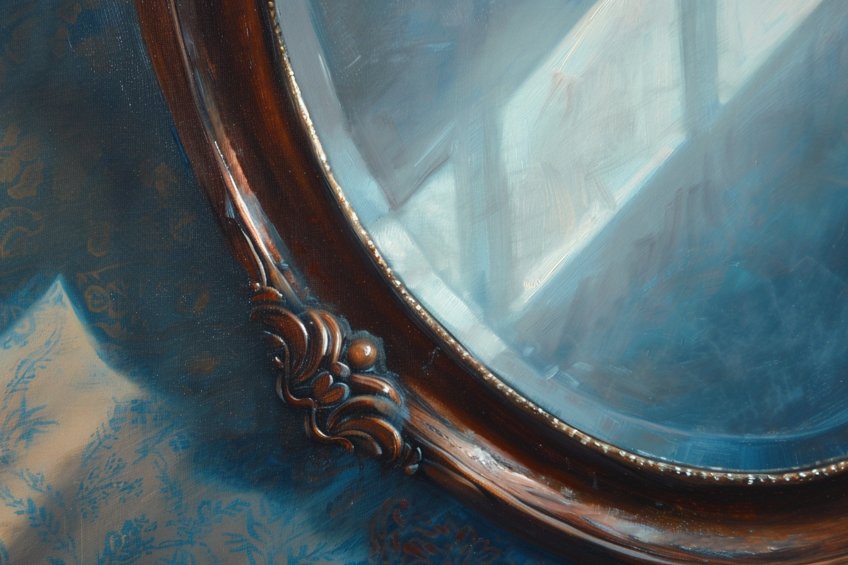Can You Paint a Mirror? – Transforming Reflections
This post may contain affiliate links. We may earn a small commission from purchases made through them, at no additional cost to you. You help to support resin-expert.com
Welcome to the whimsical world of DIY magic where reflections meet brushstrokes and creativity knows no bounds! Have you ever found yourself gazing into a mirror, pondering its potential beyond mere reflection? Well, wonder no more! In this enchanting guide, we’re diving into the question: can you paint a mirror? Join us as we unlock the secrets to transforming your ordinary-looking glass into a dazzling work of art. Get ready to brush away any doubts and let your imagination shine as we explore the mesmerizing possibilities of mirror painting!
Table of Contents
Key Takeaways
- Mirrors can be successfully painted to add a unique element to various spaces.
- Proper preparation and the right materials are critical for a durable paint job.
- Sealing the paint is essential for maintaining the mirror’s appearance and function.
Can You Paint on Mirrors?
Painting a mirror, whether it is to refurbish an old piece or to add a touch of personal style to home decor, is a task that can be undertaken by DIY enthusiasts. This project allows individuals to transform a plain mirror into a statement piece or make a worn mirror frame look new again. With the correct supplies and techniques, it is possible to paint not only the frame but also the mirrored surface itself, providing countless opportunities for creative expression and home decoration.
- Preparation: Before applying any paint, the mirror surface must be cleaned thoroughly. A microfiber cloth dampened with water is effective in removing dust and grime, ensuring that the paint will adhere properly to the glass surface.
- Primer: A crucial step in painting mirrors is the application of a primer. White gesso or a specialized acrylic paint primer for glass is recommended to create a surface that the paint can grip onto. Without a primer, the paint might flake or peel off over time.
- Painting: Acrylic paints are suitable for mirror painting because they adhere well to primed surfaces and are relatively easy to work with. Spray paint is another option, specifically for a more uniform coating. When using spray paint, it is advisable to hold the can about a foot away from the mirror to prevent the paint from running, and apply several thin coats rather than one thick layer to avoid drips and to achieve a smooth finish.
- Sanding: Some experts suggest that lightly sanding the surface after applying the primer can improve paint adhesion further. This should be done gently to roughen the surface slightly without causing damage.
Artists have adopted the art of mirror painting as a way to express creativity, making this a popular trend. Whether for artistic purposes or home decor, one can successfully paint over a mirrored surface by following these guidelines.
Preparing the Mirror and Frame for Painting
The first step to successfully painting a mirror and its frame involves thorough preparation, which sets the stage for a smooth, lasting finish. Dirt, dust, and previous coatings must be meticulously removed to ensure superior adhesion of primer and paint.
Cleaning and Sanding Surfaces
Before painting, one should clean the mirror frame to eliminate any dust and grime. For wood or metal frames, a damp cloth is recommended, while care should be taken to preserve intricate details or crevices:
- Wood and metal frames: Dust with a clean cloth, followed by wiping down with a damp rag.
- Mirror glass: Use a glass cleaner or a solution of warm water and dish soap, applied with a microfiber cloth, to avoid streaks.
Sanding marks the pivotal next step, especially for wooden frames, ensuring a surface primed for paint adhesion. Remember to sand along the wood grain to deter any unsightly scratches. Begin with a coarse-grit sandpaper, gradually transitioning to a finer grit for optimal smoothness. For metal frames, tread lightly with a fine-grit sandpaper to preserve the material’s integrity.
With precision and care, your mirror frame will be primed for a vibrant transformation.
Priming the Surface
Priming prepares the frame for painting by sealing the surface and ensuring a uniform base:
- Wood frames: Apply a coat of white primer to enhance the paint’s color and durability.
- Metal frames: Use a spray primer designed for metal to prevent rust and improve paint adhesion.
It is essential that the primer is completely dry before proceeding to paint. One may choose from a variety of primers, such as chalk paint, latex, or oil-based depending on the frame material and desired outcome.
The Painting Process
The successful painting of a mirror requires the use of specific types of paint and adhering to a careful process to ensure an elegant and lasting finish.
Applying Paint
To paint a mirror, one must first prepare the surface. The mirror should be cleaned to remove dust, fingerprints, and any other contaminants. A dampened microfiber cloth can be used for cleaning, followed by a dry one to ensure the surface is completely free of moisture. For spray painting, newspaper or cardboard serves as an effective material for covering the surrounding area to protect it from overspray. When the mirror is ready for painting, applying the paint in a well-ventilated area is crucial.
For acrylic paint:
- Use a soft bristle brush or a foam brush to apply the paint smoothly.
- Apply the paint evenly, ensuring to avoid excessive brush marks.
- Allow the first coat to dry thoroughly before deciding whether a second coat is necessary for full coverage.
For spray paint:
- Shake the can well and hold it approximately six to eight inches away from the mirror’s surface.
- Use even, sweeping motions to apply the first coat.
- Drying time between coats is essential; follow the manufacturer’s recommended time before applying the next layer.
- Multiple light coats are better than one heavy coat to prevent drips and achieve a smooth metallic finish if desired.
What Paint Must I Use?
The choice of paint largely depends on the desired effect and the type of mirror being updated. Acrylic paint is suitable for creating detailed designs or if the mirror is to display more picture-like qualities. Spray paint is ideal for larger areas and for achieving a uniform, smooth finish.
Products like Rust-Oleum Mirror Effect or Krylon Looking Glass are specifically formulated in spray form to create a mirror paint finish on glass.
- Mirror paint can transform an old mirror into a reflective piece with a like-new appearance.
- Metallic finish spray paints should be used if one is looking to achieve a shiny, reflective surface.
- To ensure paint adheres only to desired areas, use painter’s tape to cover any sections that do not require painting.
- After painting, it is critical to allow the paint to become completely dry. Applying a wax sealant can provide added durability and maintain the integrity of the paint job over time.
Let the Paint Dry
After applying paint to a mirror, it is crucial to allow sufficient drying time. This step is essential because drying influences the paint’s durability and the overall finish quality. When a person has the appropriate environment for painting—a well-ventilated area with low humidity—their paint will dry more evenly. The drying time can vary depending on the brand and the type of paint used:
- Acrylic paint: Generally dries to the touch within 1 hour, and to handle within 24 hours.
- Oil-based paint: May take up to 8 hours to dry to the touch, and up to 24 hours for handling.
- Spray paint: Can dry to the touch in as little as 20 minutes, but should be left for 24 hours before handling.
Exercise restraint during the drying phase, refraining from touching the freshly painted surface, even if it seems dry to the touch. Refer to the paint’s label for precise drying times, as they may vary between products. Shield the painted mirror from dust during drying to maintain a flawless surface. Avoid hastening the drying process with heat sources, as this can compromise the integrity of the paint and result in imperfections.
By practicing patience during drying, you’ll achieve a sleek, polished finish that accentuates the mirror’s reflective allure to perfection.
Applying a Sealant
After a mirror has been painted, it’s crucial to seal the artwork to protect the surface and ensure longevity. A sealant prevents the paint from peeling and maintains its vibrancy.
Protecting the Newly Painted Mirror
To shield the newly applied paint on a mirror, one should apply a sealant, which acts as a barrier against environmental factors and wear. Here are the steps a person should follow:
- Clean the surface: Before applying a sealant, ensure the painted area is clean and free of any dust or debris to promote good adhesion.
- Choose the right sealant: Acrylic sealers are often recommended for mirrors as they dry clear and can come in various finishes like gloss, matte, or satin.
- Application method: The sealant can usually be applied with a brush or as a spray. When using a brush, apply with smooth, even strokes to avoid streaks.
- Drying time: Allow the sealant to dry completely, according to the manufacturer’s instructions, before handling the mirror.
When selecting a sealant, one should ensure it is appropriate for use on mirrors and compatible with the type of paint used. Regular checks for any signs of wear or peeling can help maintain the mirror’s appearance.
As we conclude our colorful journey into the realm of mirror painting, remember that the only limit to your creativity is the edge of your imagination! Whether you’ve envisioned a vibrant abstract masterpiece or a whimsical landscape, the mirror is your canvas waiting to be transformed. Embrace the brush, let your colors dance, and watch as your reflection becomes a portal to your artistic soul. So go ahead, dare to splash some paint, and let your mirror reflect the vibrant hues of your creative spirit. Happy painting!
Frequently Asked Questions
How Do You Prepare a Mirror Surface for Painting?
To prepare a mirror for painting, one should start with a thorough cleaning of the glass to remove any dust or grease. A damp microfiber cloth is typically used for this purpose, ensuring that the mirror is completely clean for effective paint adhesion.
What Type of Paint Is Best for Painting on a Mirror Frame?
When painting a mirror frame, acrylic paint formulated for glass, or an oil-based paint is often recommended. These types of paint provide good coverage and durability. It’s essential to choose a paint that will adhere well to the frame’s material, whether it’s wood, metal, or plastic.


